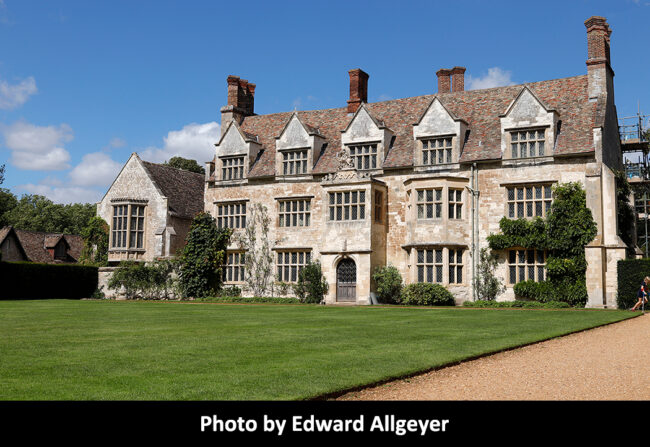
The entrance facade
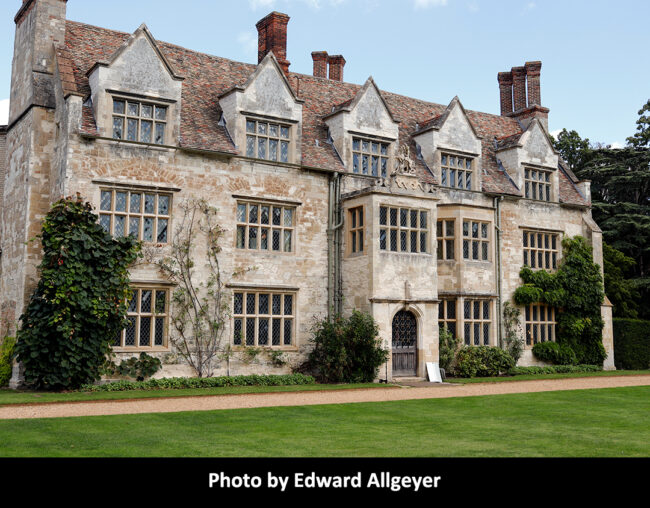
The entrance facade
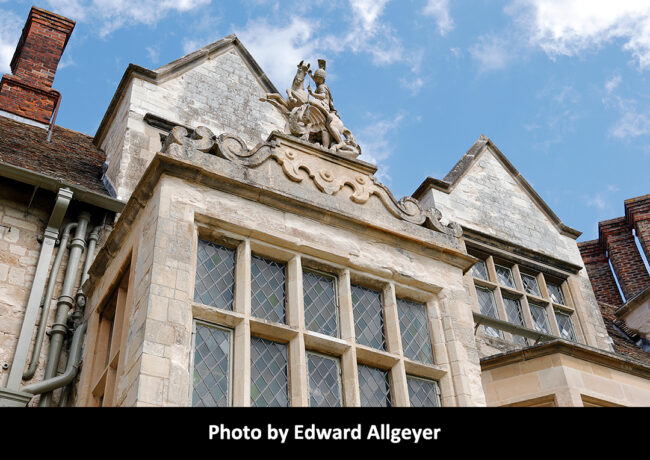
The entrance facade with a sculpture of St. George Slaying the Dragon
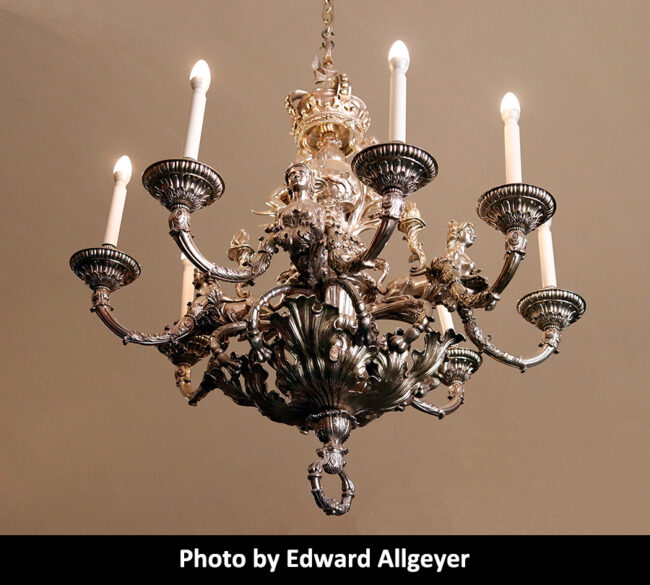
One of the two William Kent-designed chandeliers in the library at Anglesey Abbey. Designed for George II, they once hung in the Queen's Drawing Room at Windsor Castle.
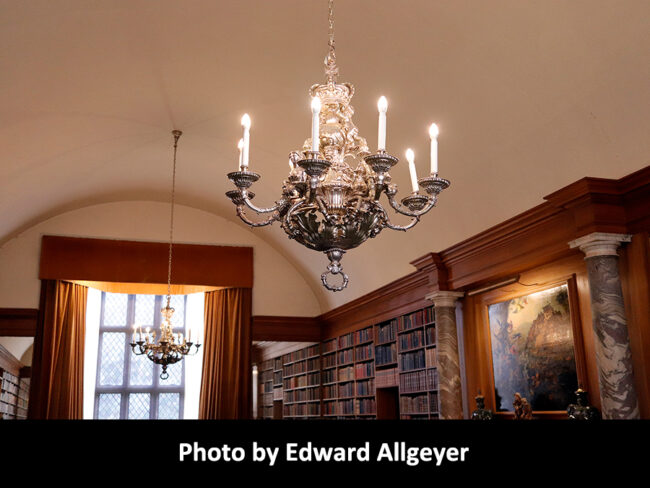
The two William Kent-designed chandeliers in the library at Anglesey Abbey.
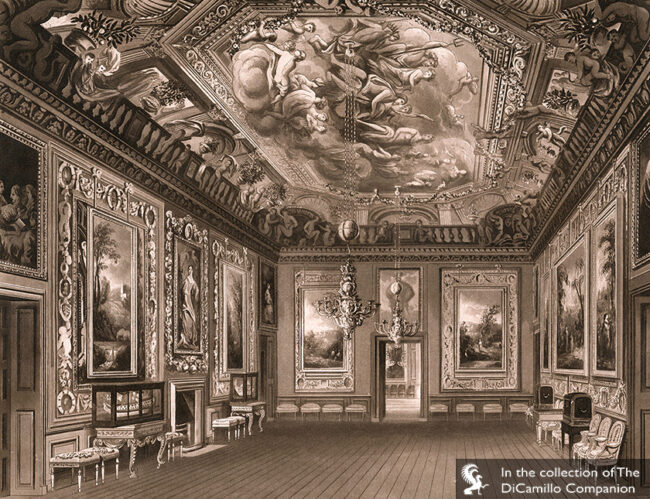
The Queen's Drawing Room at Windsor Castle from an 1819 acquatint. Visible are two of the five solid silver chandeliers designed by William Kent for George II, two of which are in the collection of Anglesey Abbey.

Ivory griffin candle holder, one of a pair, today in the Fairhaven Collection at Anglesey.
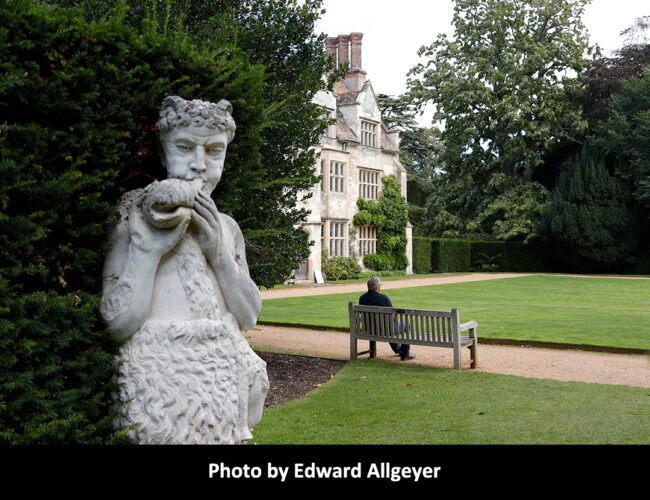
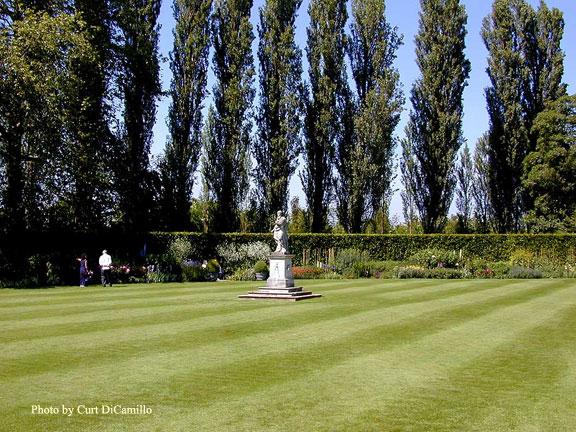
The Herbaceous Garden
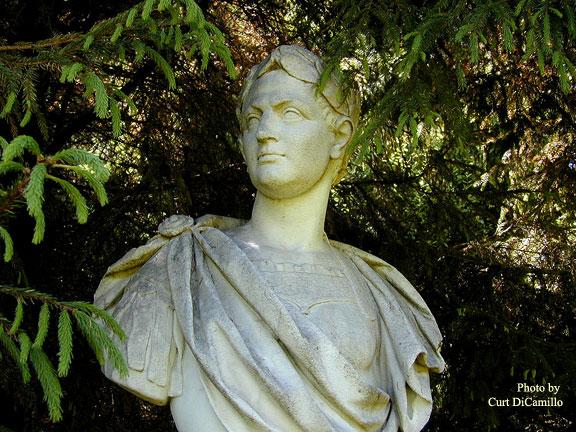
The Emperors' Walk
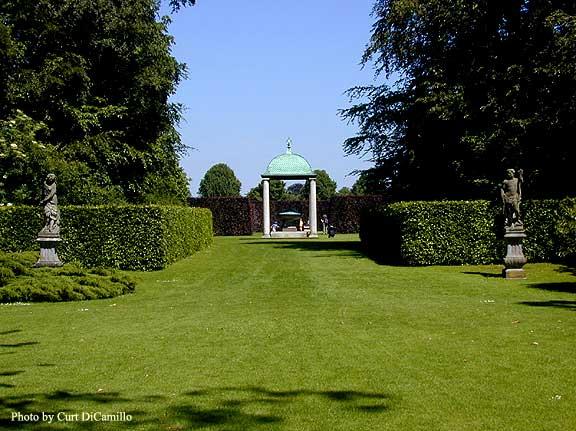
The Temple
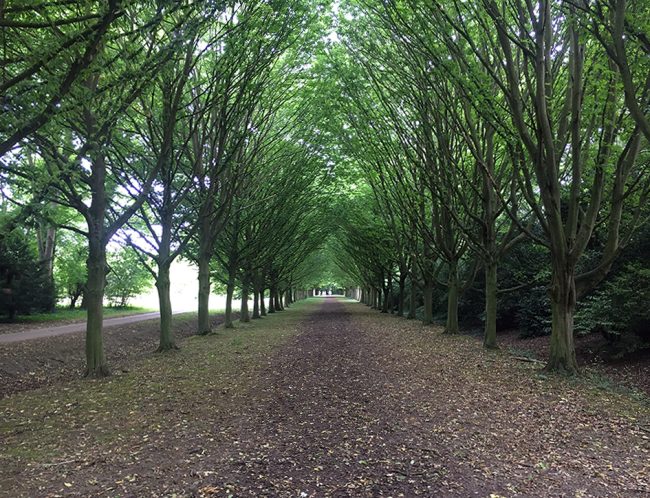
The garden. Photograph by Edward Allgeyer.
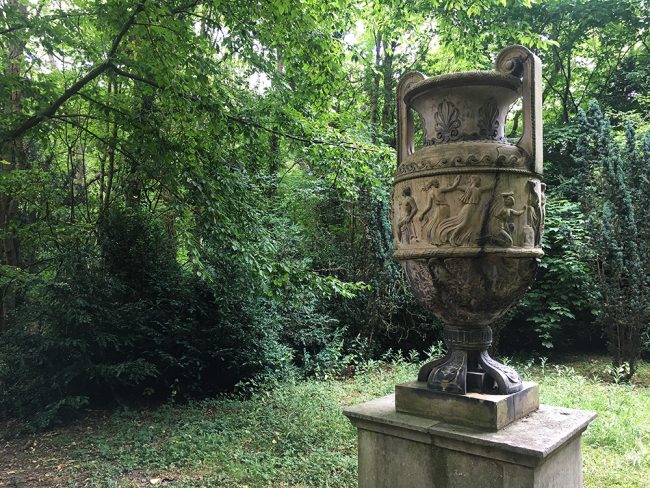
The garden. Photograph by Edward Allgeyer.
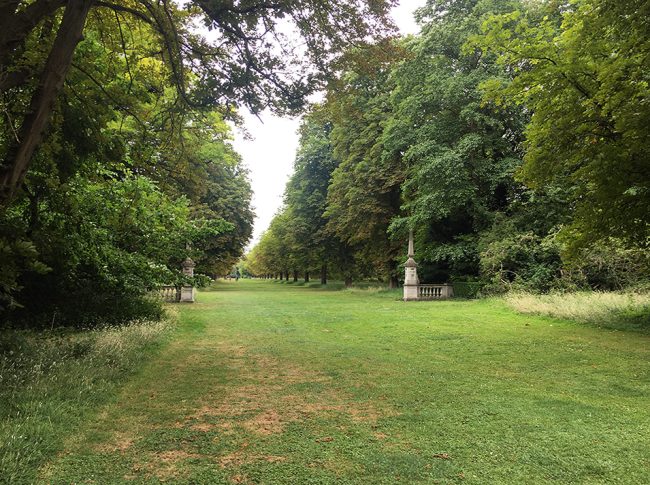
The garden. Photograph by Edward Allgeyer.
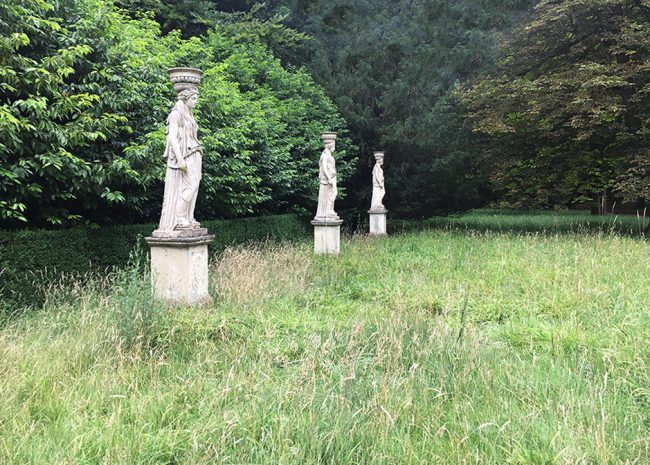
The garden. Photograph by Edward Allgeyer.
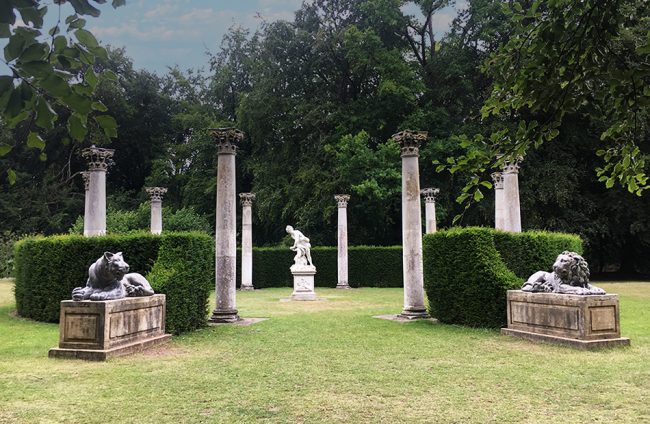
The Temple Lawn. Photograph by Edward Allgeyer.
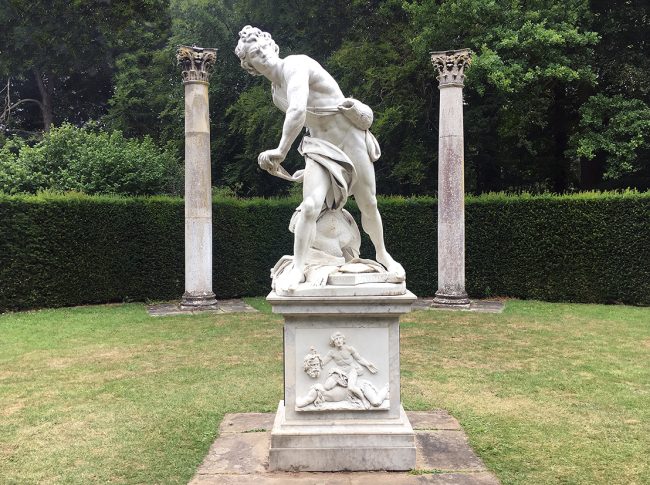
The Temple Lawn. Photograph by Edward Allgeyer.
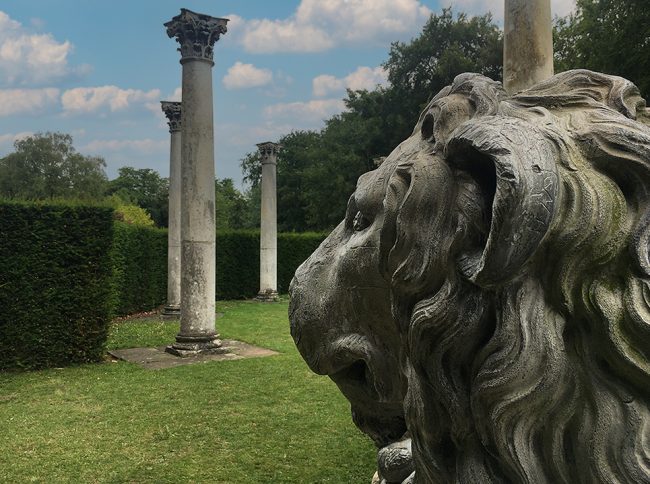
The Temple Lawn. Photograph by Edward Allgeyer.
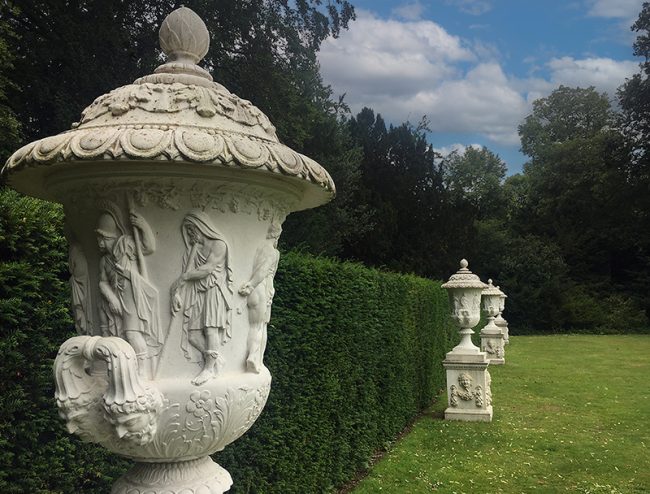
The garden. Photograph by Edward Allgeyer.
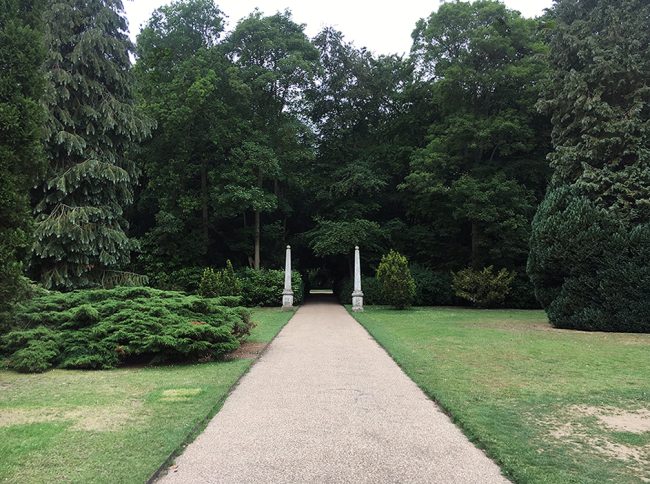
The garden. Photograph by Edward Allgeyer.
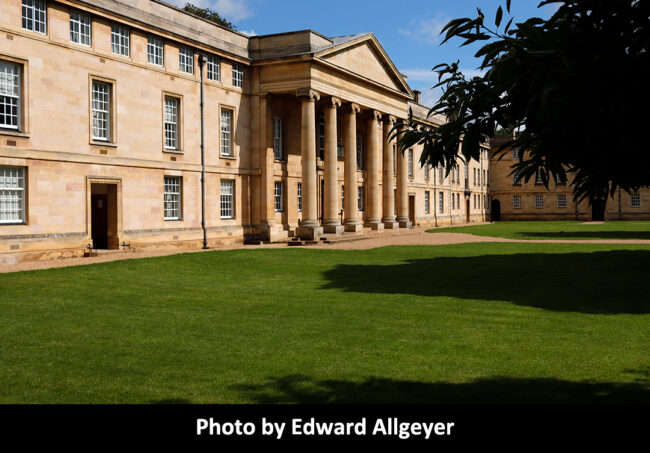
Downing College, University of Cambridge, founded by the estate of Sir George Downing, 3rd Bt., of Anglesey Abbey.
Earlier Houses: The remains of an Augustinian priory, founded in 1135, were incorporated into the current house circa 1600.
House & Family History: Anglesey Abbey, which takes its name from the nearby hamlet of Angerhale, was founded (probably by Henry I) as an Augustinian abbey in the 12th century and remained a religious house for almost 400 years. In 1536 the abbey was closed as a part of the Dissolution of the Monasteries instigated by Henry VIII; by the late 1590s the remains of the abbey’s buildings had been converted into a private house for the Fowkes family. In the early 17th century Anglesey Abbey was acquired by Thomas Hobson, a very successful Cambridge carrier who hired out horses, giving his customers the “choice” of the horse nearest the door (generally the most well rested animal), or none at all. This is the source of the famous phrase “Hobson’s Choice,” meaning the choice Hobson offers you, or nothing. In 1627 Hobson's son-in-law, Thomas Parker, acquired the property; it stayed in the Parker family for 100 years. In the 18th century Sir George Downing, 3rd Bt., whose estate, in 1800, went to found Downing College (see "Images" section) at Cambridge, purchased the abbey. Downing's fortune was left to him by his grandfather, the 1st Baronet, who served both Cromwell and Charles II and built No. 10 Downing Street, which has been the London home of the prime minister for 250 years. Begun in 1807, Downing College was designed by William Wilkins and is the only Cambridge college to be designed in the Greek Revival style. It is also the world's first college laid out on the campus plan, preceding Jefferson's University of Virginia by 10 years. In 1861 The Rev. John Hailstone acquired Anglesey Abbey and performed major alterations to the house and laid out a small garden. In 1926 Huttleston Broughton, later 1st Lord Fairhaven, purchased Anglesey from The Rev. James Clark, a friend of the Hailstone family. Over the next 40 years Broughton, who was American, transformed Anglesey, filling the house with art: topographical paintings, 18th century snuff boxes, illustrated books, Italian mosaics, bronzes, tapestries, furniture, and statuary. The bookshelves in the library are made from the elmwood pilings of John Rennie's Waterloo Bridge (1817), which was demolished in 1934. Constable's nearby canvas of George IV embarking at Whitehall in the royal barge to open Waterloo Bridge provides a narrative for the shelves. The George II walnut library table once belonged to Sir Robert Walpole, where it was installed at Houghton Hall. The interior of Anglesey has been described as having "something of a great Long Island interior." Lord Fairhaven's finest achievement, however, was the creation of the gardens at Anglesey, one of the greatest gardens of the 20th century. In 1966 the 1st Lord Fairhaven willed the house, contents, and the 98-acre grounds to the National Trust.
Collections: Anglesey contains the Fairhaven Collection of paintings and furniture, which includes notable works by Claude Lorraine, fine examples of furniture, silver, tapestries, and one of the Trust's largest collections of clocks. In the library are Constable's canvas of George IV embarking at Whitehall in the royal barge to open Waterloo Bridge, a George II walnut library table that once belonged to Sir Robert Walpole (where it was installed at Houghton Hall), and two George II silver chandeliers. Designed by William Kent and made 1736-37 by Balthasar Friedrich Behrens, a German silversmith, the enormous chandeliers were originally part of a set of five made for the king for his palace in Hanover (by the early 19th century the light fixtures were hanging in Windsor Castle; see "Images" section). Today, one of the chandeliers is in the collection of the Museum of Fine Arts, Boston, two are at Anglesey, one is in a private collection, and the last's location is unknown. Some contents from Anglesey were auctioned in London by Christie's September 10, 2007. On March 13, 2013 Lyon & Turnbull sold, for £2,200, at auction in Edinburgh a George II silver salver (London, 1733, no maker's mark) that belonged to Sir Jacob Downing, 4th Bt. This scalloped rim salver was once probably in the collection at Anglesey.
Comments: Arthur Bryant: the gardens at Anglesey "...can compare with the great masterpieces of the Georgian era."
Garden & Outbuildings: Begun in 1926 by the 1st Lord Fairhaven and his brother, the gardens of Anglesey Abbey, based on 18th and 19th century English gardens, are considered among the finest in England. Spanning 98 acres, the grounds contain a pinetum, the Winter Walk, an arboretum, the Warriors' Walk, the Emperors' Walk (containing twelve 18th century marble busts of Roman emperors displayed along 440 yards), the Olympian Walk, the Dahlia Garden, the Herbaceous Garden, the Winter Dell, the Spring Garden, the Bishops' Walk, the Monks' Garden, the Rose Garden, the Hyacinth Garden (with over 4,000 hyacinths), the formal garden, the Narcissus Garden, the Jubilee Avenue, the Pilgrim's Lawn, Coronation Avenue, an 18th century watermill, and the Temple Lawn, whose columns came from the demolished Chesterfield House in London (see "Images" section).
Architect: Albert Edward Richardson
Date: 1955Architect: Sidney Parvin
Date: 1926-37Country Life: LXVIII, 832 plan, 1930. LXIX, 110 [Pictures], 376 [Pictures], 1931. CXV, 860, 1954.
Title: Sotheby's Auction Catalog: Fine Furniture & Clocks, Including Property From Two Noble English Families, Sep 10, 2007
Author: NA
Year Published: 2007
Publisher: London: Sotheby's
ISBN: NA
Book Type: Softback
Title: Anglesey Abbey Guidebook
Author: Fedden, Robin
Year Published: 2002
Reference: pgs. 19-20
Publisher: London: The National Trust
ISBN: NA
Book Type: Light Softback
Title: Gardens of the National Trust
Author: Lacey, Stephen
Year Published: 2000
Publisher: London: The National Trust
ISBN: 0707801419
Book Type: Hardback
Title: In Ruins: The Once Great Houses of Ireland
Author: Marsden, Simon; McLaren, Duncan
Year Published: 1997
Publisher: Boston: Little, Brown and Company
ISBN: 0821223569
Book Type: Hardback
Title: Anglesey Abbey Guidebook
Author: Fedden, Robin
Year Published: 2002
Publisher: London: The National Trust
ISBN: NA
Book Type: Light Softback
Title: Anglesey Abbey Garden Guidebook
Author: NA
Year Published: 1997
Publisher: London: The National Trust
ISBN: NA
Book Type: Light Softback
Title: Burke's & Savills Guide to Country Houses, Volume III: East Anglia
Author: Kenworthy-Browne, John; Reid, Peter; Sayer, Michael; Watkin, David
Year Published: 1981
Publisher: London: Burke's Peerage
ISBN: 0850110351
Book Type: Hardback
House Listed: Grade I
Park Listed: Grade II*
Current Seat / Home of: Ailwyn Broughton, 3rd Baron Fairhaven
Past Seat / Home of: Hinde/Hynde family, 1539-96. Fowkes family, 1596-1625. Thomas Hobson, 1625-30. Thomas Parker, 1630-43; Parker family here until 1734. Sir George Downing, 3rd Bt., 1734-49. Jacob J. Whittingham, 1749-99. The Rev. George Leonard Jenyns, until 1848. The Rev. John Hailstone, 19th century. The Rev. James Clark, 1888-1926. Huttleston Broughton, 1st Lord Fairhaven, 1926-66.
Current Ownership Type: The National Trust
Primary Current Ownership Use: Visitor Attraction
House Open to Public: Yes
Phone: 01223-810-080
Email: [email protected]
Website: https://www.nationaltrust.org.uk
Historic Houses Member: No